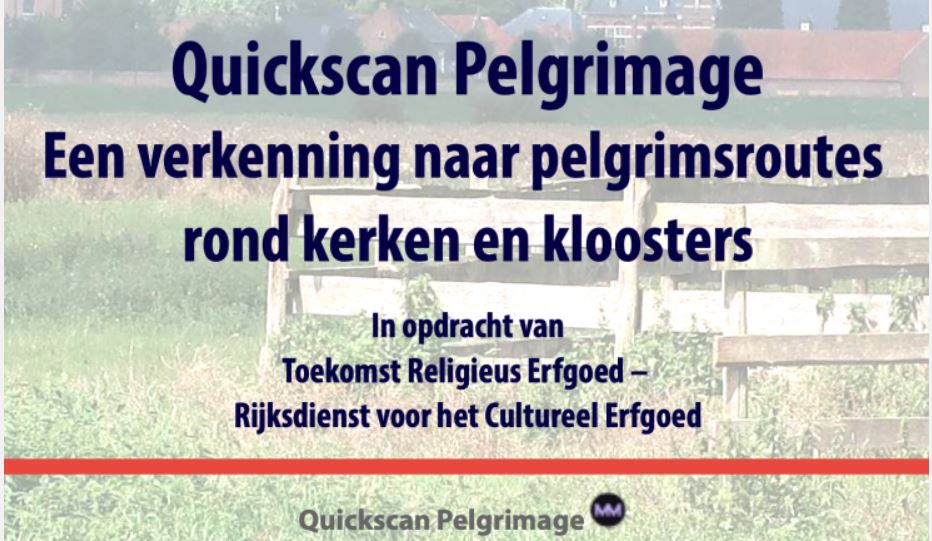
Modern pilgrims are an interesting target group for the owners and operators of religious heritage sites. The Pilgrimage Quickscan, a study carried out by the programme Toekomst Religieus Erfgoed (Future of Religious Heritage) – part of Rijksdienst voor het Cultureel Erfgoed (Cultural Heritage Agency The Netherlands) shows how pilgrimage routes can be developed for different target groups. Churches and monasteries are central to this.
Today, people go on pilgrimage for a variety of reasons: they are journeying to a religious destination, they want to enjoy the landscape and nature, they are interested in the stories of history and culture, or they are looking for a moment of self-reflection. There is a large range of motives and anyone who identifies themselves as taking a pilgrimage, would call themself a “pilgrim”. At the same time, it can be seen that the routes themselves change. Pilgrimage paths no longer have a purely sacred purpose, local and regional paths, short stages, loops and “mini-camini’s”, are all developed to evoke the association with the pilgrimage route, but are not considered a pilgrimage path. The tourism organization Visit Zuid-Limburg, for example, has developed 11 walking routes along its religious heritage sites, as part of the ‘Bezin in Zuid-Limburg‘ (Reflect in Zuid—Limburg) campaign.
This contemporary, broad interpretation of the concept of pilgrimage offers diverse perspectives for parties who would like to develop a route or want to expand, strengthen or further professionalize an existing route.
A model has been developed for the Quickscan, performed by Miranda Megens, which can be used to categorise the pilgrimage route. If the main focus of the route is on the religious experience, this route would be categorised based on its religious aspect. If the main focus is on recreation and leisure, the route would be categorised based on its recreational aspect. With the categorisation of heritage, this would mean that there is an extraordinary religious heritage site to visit. And the categorisation of culture and identity would mean that there are churches, chapels and roadside crosses that tell the cultural-historical story of the region along the way. In short, this model clarifies the positioning, elaboration and focus on target groups.
Of course the walker or cyclist may also want to see the beautiful church or monastery from the inside. That is why access to religious heritage along the way is important. Climbing the tower, viewing the ancient grave or picking up the key from the neighbours is something that enhances the experience of the pilgrimage.
The Quickscan on Pilgrimage is an exploratory study on how parties can further professionalize or develop pilgrimage routes. The starting point is the accessibility of churches and monasteries – one of the five pillars of the Toekomst Religieus Erfgoed (Future of Religious Heritage) program in The Netherlands. The presentation of Miranda Megens’ research can be viewed via this link and the entire research can be downloaded here.





Follow us: